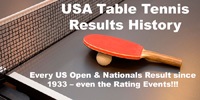If you are putting in hours and Hours and HOURS of training, you should improve, right? And you likely will. But are you improving as fast as you could? Or are you just putting in mindless hours that’ll lead to advanced mediocrity, as opposed to really improving to your maximum potential? For many players, alas, it’s the former.
The idea of “Deliberate Practice” was pioneered by Psychologist Anders Ericsson, who found that real progress comes from structured, focused training designed to push you beyond your comfort zone. It is a type of training marked by:
- Clear, measurable goals
- Tasks that stretch ability
- Immediate feedback
- Focused repetition
- Reflection and adjustment
Many or most players, especially those below the elite level, spend much of their practice time mindlessly hitting balls back and forth, which may not address weaknesses or build up strengths in a way they can be used effectively in a match situation. To reach a higher level, you should have sessions that address each of the above.
EXAMPLES of Deliberate Practice for Table Tennis
(NOTE – the following drills, Keys to Effective Deliberate Practice, and Common Mistakes to Avoid come from Sean O’Neill, with his permission.)
- Serve placement focus: Spend 20 minutes aiming for one small target on the table. Get feedback from a coach or even a camera. Track how many land where you want.
- Footwork patterns with video review: Work on side-to-side movement while looping forehands. Record the session and review whether you maintain balance and timing.
- Serve receive against spin: Ask a partner to serve heavy underspin, sidespin, or no spin. Repeat until you can return 8 of 10 balls consistently with the same technique.
- Short ball control: Practice pushing against a variety of serves, adjusting placement and depth until you feel confident under pressure.
Each of these drills has a purpose, a feedback loop, and a way to measure progress.
KEYS to Effective Deliberate Practice
- Set specific goals: “I want to improve my third-ball attack against underspin” is better than “I want to get better.”
- Seek immediate feedback: Ask a coach, use video, or review results on the spot.
- Push yourself: If practice feels comfortable, you’re not stretching your limits.
- Measure progress: Track consistency percentages, point outcomes, or even how relaxed your body feels under pressure.
COMMON MISTAKES to Avoid
- Practicing only what you’re already good at.
- Playing “fun” matches without focusing on weak areas.
- Ignoring feedback or failing to review video.
- Training without a clear objective for the session.
CONCLUSION
Quality practice is far more important than quantity. Using deliberate practice will allow you to step-by-step work your way up as you focus on each aspect of the game. It’s the best way to improve at the fastest rate possible to your highest possible level.





